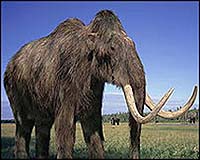| . |  |
. |
Geneva (AFP) July 10, 2009 Dismayed by dwindling numbers, some experts say tiger farming can stem the burgeoning illegal trade in the endangered cat's pelts, bones and body parts but others argue that this will only fuel demand. "Domestic trade in tiger parts and derivatives has been banned across the world since the late 1990s," said Juan Vasquez, a spokesman for CITES or the UN body that regulates trade in endangered species, adding that illicit trade was still flourishing. "Since tigers can be bred very easily in captivity, the argument is made that they should be 'farmed' to supply a relatively inelastic demand," he added on the sidelines of a CITES meeting. There were once over 100,000 tigers throughout Asia, but only 400 are thought to be left, according to CITES. Not only are tigers threatened by the loss of natural habitat amid rapid urbanisation in Asia, they are also hunted for fur and body parts used in traditional Chinese medicine. Hank Jenkins, a former chair of a CITES committee, told AFP: "You can't address demand by prohibition," stressing that the breeding of crocodiles, once highly endangered, had set a valuable precedent. "Since then the situation has reversed. There are now more crocodile species on Appendix II than Appendix I," said Jenkins, referring to the categories in the UN Convention on Endangered Species. CITES Appendix I lists the most endangered species and prohibits their international trade. Appendix II lists threatened species but allows for limited and licenced global trading. Jenkins said the legal farming of tigers could also benefit people living alongside the big cats in countries such as Indonesia or India. "For some people who live in these parts of the world, poachers act like pest control. Any conservation strategy would have to address habitat, prey, human-tiger conflict and demand," he said. He acknowledged however there was strong opposition to tiger farming. Major conservation groups such as the WWF are among the opponents who argue this would fuel demand and poaching. "If you breed tigers, you will stimulate the market," said Susan Liebermann, director of the WWF's species programme. For those who use tiger parts in traditional medicines, wild tigers are viewed as more potent than those bred in captivity and therefore this would not make a significant dent in poaching, she said. "It's very expensive to breed tigers in captivity, it's easier to shoot one in the wild," said Liebermann. The World Bank too urged caution. "We cannot know for sure if tiger farming will work. And if it does not work the downside risks are just too high -- irreversible harm," said Keshav Varma, who heads the World Bank's Global Tiger Initiative. "Having carefully weighed the economic arguments we urge the CITES community to uphold the ban on wild tiger products and for all countries to continue to ban the domestic trade of wild tigers," he said. Share This Article With Planet Earth
Related Links Darwin Today At TerraDaily.com
 Steppe change: Mammoths roamed southern Spain
Steppe change: Mammoths roamed southern SpainParis (AFP) July 9, 2009 Remains of woolly mammoths have been found in southern Spain, proving that the chilly grip of the last Ice Age extended farther south than thought, palaeontologists said on Thursday. The fossilised remains of at least four mature male mammoths (Mammuthus primigenius) were found in a peat bog near the town of Padul in the Granada Basin, they said. Carbon-dating estimates the animals lived ... read more |
|
| The content herein, unless otherwise known to be public domain, are Copyright 1995-2009 - SpaceDaily. AFP and UPI Wire Stories are copyright Agence France-Presse and United Press International. ESA Portal Reports are copyright European Space Agency. All NASA sourced material is public domain. Additional copyrights may apply in whole or part to other bona fide parties. Advertising does not imply endorsement,agreement or approval of any opinions, statements or information provided by SpaceDaily on any Web page published or hosted by SpaceDaily. Privacy Statement |